Tuma: How to Win "The Pennant" (on Underdog Fantasy)
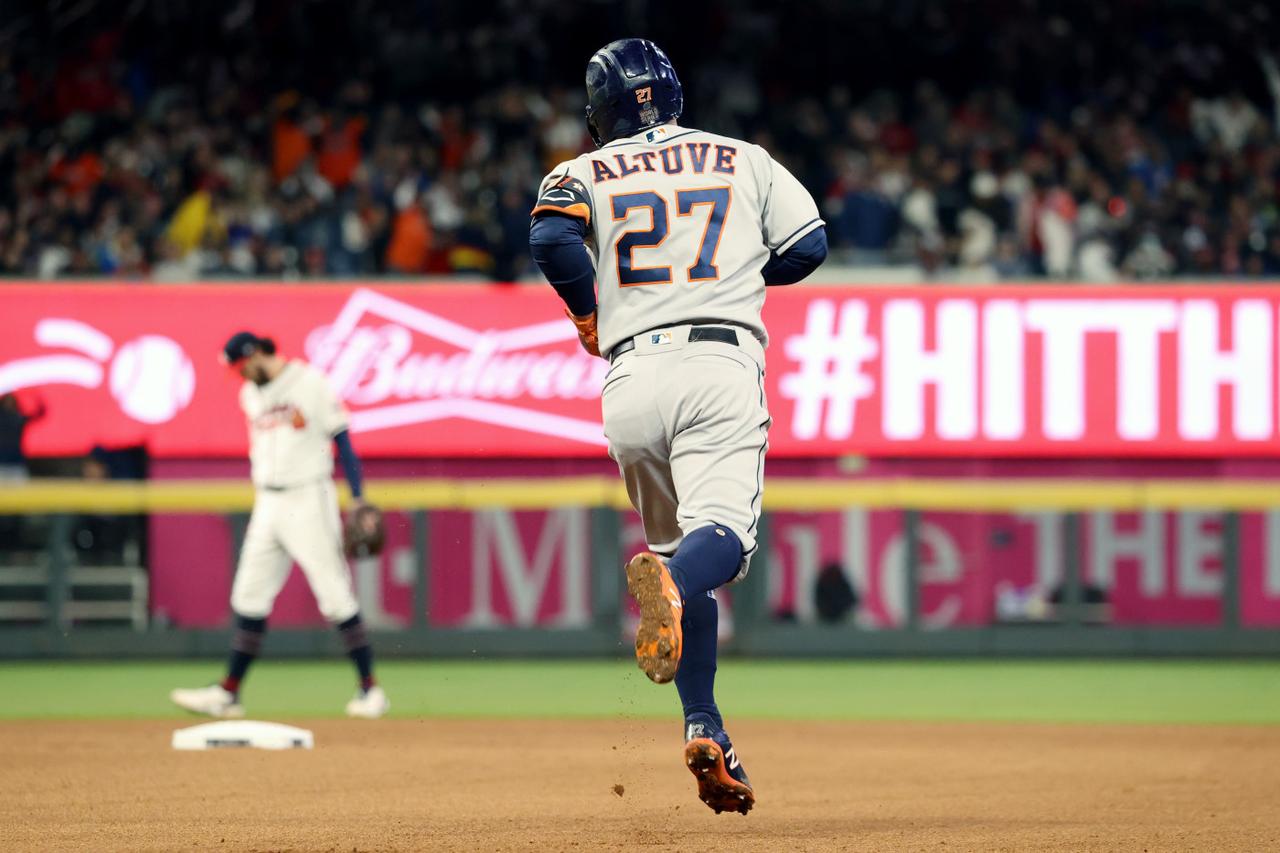
The MLB regular season is winding down. The other week we reported on the top advance rates from Underdog's $25 Best Ball contest, "The Dinger." There's going to be plenty of time this offseason to discuss more regular season Best Ball strategy, but for now the focus is shifting to the playoffs.
Enter "The Pennant", UD's $10 playoff Best Ball tournament that has more scoring twists than initially catch the eye.
That's because this format is new for a couple of reasons:
It's the first year of MLB's new playoff format
MLB Best Ball is still in its infancy from a macro-level strategy perspective
This article was written to help you sort through it all and provide a starting point to start drafting. There will undoubtedly be more revelations about the optimal strategy after the World Series, once we have hard data. That means there's a possible edge to be had if you can figure it out before everyone else.
If you're interested in talking things through between now and the Wild Card Series, be sure to reach out on Twitter anytime, @toomuchtuma.
The Format
If you're interested in reading the contest breakdown written by the Underdog overlords, you can find all the info by clicking here. Otherwise, I'll be doing my best to summarize it for you.
The Pennant will have 3 Rounds, with each round consisting of player groups as seen below:
Round 1 : 6 person groups (Wild Card + Divisional Series)
Round 2: 6 person groups (Conference Series)
Round 3: 310 person final group (World Series)
Essentially, you start your league in a 6-person draft. If you come in first place during Round 1, then you advance to Round 2 with a group of other Round 1 winners. If you win again, then you move on to Round 3. The prize breakdown is as follows:

You'll notice that the prize pool is heavily weighted towards the top. We'll get into this in "The Strategy" section, but this means you likely want to sell out for a top finish. It doesn't matter if you come in 2,500th or 9,500th in terms of payouts. It's therefore worth the risk to "stack." If you primarily draft players from 2 or 3 teams, and 2 of those teams end up in the World Series, then you have a good shot at taking home all the prize money (more on this below).
Of course, you still need to advance to Round 3 in order to make that happen. You'll note that Round 1 consists of the Wild Card Series and the Divisional Series. Due to MLB's new playoff format, not every team plays in the Wild Card Series.
This is where your strategy comes into play!
The Playoff Format
Let's make sure we all understand how the playoffs are working this season. 12 teams total. 6 in each league. 2 byes. This leaves 8 teams facing off in the Wild Card Series (which is a best of 3).
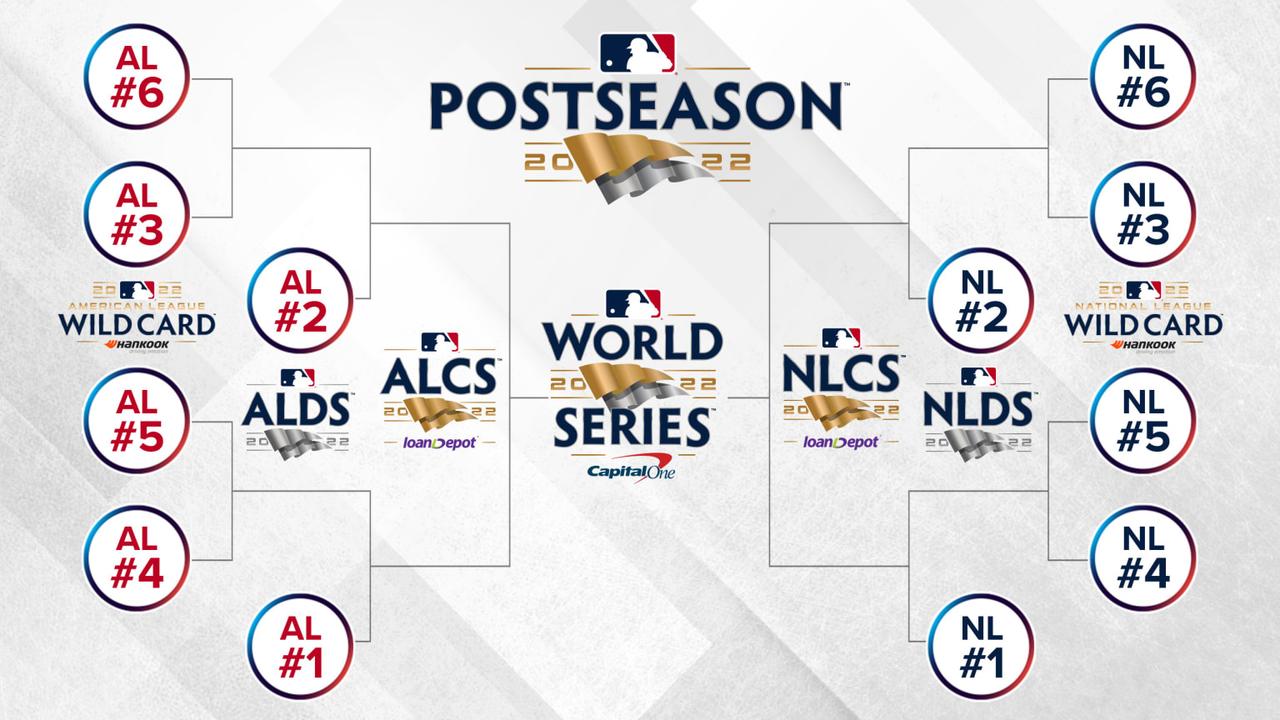
Some more notes on MLB's new playoff format:
Each Wild Card Series game will be played in the home park of the team with the higher seed (so, the Nos. 3 and 4 seeds will have the hosting duties).
Teams are NOT reseeded after the Wild Card Series.
The Divisional Series will remain a best-of-five in a 2-2-1 format, with home-field advantage going to the higher seed.
The League Championship Series and World Series rounds remain best-of-seven in a 2-3-2 format, with regard to home-field advantage.
The Scoring
Here is the scoring system for Underdog MLB Best Ball tournaments. Note that only pitchers can lose points!
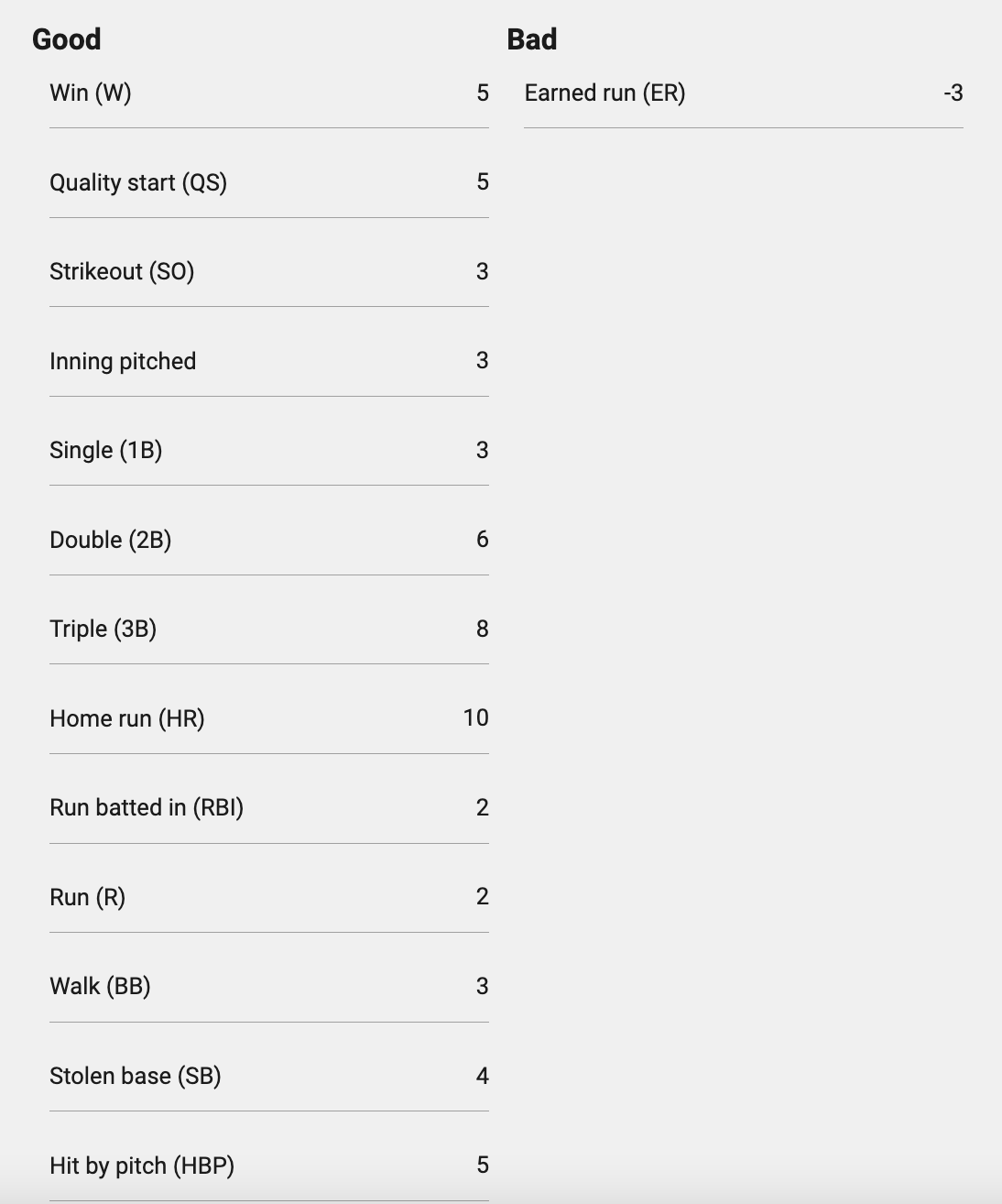
The Roster Construction
Each entrant will draft 12 total players per entry, but the top performing players over each round at the roster positions listed below will be designated as starters for that round and accumulate statistics for that round.
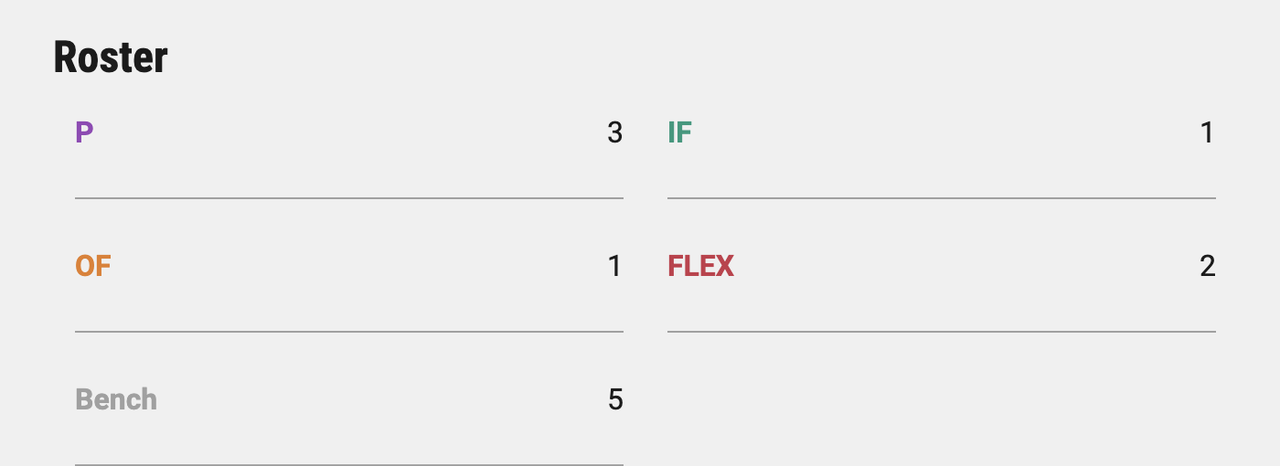
The Strategy
Finally, the part you've been waiting for! We've covered all the details about how the tournament is structured, and now its time put things into action. So, what's the optimal approach?
The first thing that should be apparent is that no matter what, you need players participating in the World Series. That's where the prize money is. And thinking this through, it's going to take more than just a few players to score the most points in that 310-person final group, right?
Stacking
This is where stacking comes into play. If you aren't familiar, it's where you draft a lot of players from the same team to lean into the positive correlation of what transpires if it all goes right. Let's say we have a Yankees-Dodgers World Series and you only selected players from those two teams. Well, you'd be in fantastic shape come Round 3.
Now you might be thinking, "what if neither of those teams make it?" Well, in that case, it doesn't matter. Your draft was a bust, but it's okay because we're playing a low-percentage, high-variance game. We want to take swings that could result in the $15,000 first place prize. If we evenly distribute our draft picks with players from 4, 5, 6, or more teams, then we're never going to have enough points to win Round 3.
This leads to the question of how many teams to stack? What's optimal? Well, we're kind of in uncharted territory with this new playoff format (and not to mention a new version of MLB Best Ball altogether), so it's tough to say definitively right now.
Luckily, @b3isbol on Twitter has been creating content around "The Pennant" for a while now and has this free Google Sheet that is loaded with helpful information.
The consensus is to stack 2 or 3 teams. As @b3isbol notes, if you choose 3, then you have a higher floor. You have an extra shot at nailing the World Series matchup. However, by stacking 3 teams you'll forego the opportunity to have the maximum 12 players available to you in Round 3.
However, if you only stack 2 teams, and you nail the World Series matchup, then you're sitting pretty come Round 3.
Uniqueness (And Who to Stack?)
I asked my buddy, an avid Underdog player, what his thoughts were on approaching The Pennant. He said to take players from the Dodgers, Astros, Mets, and Yankees.
I asked a co-worker the same question. She responded the same way. Because guess what? Everyone thinks those teams are going to the World Series!
Therefore, players from these teams have aggressive ADPs. By the way, current Pennant ADP can always be found by clicking here. I took a screenshot of the top players here:
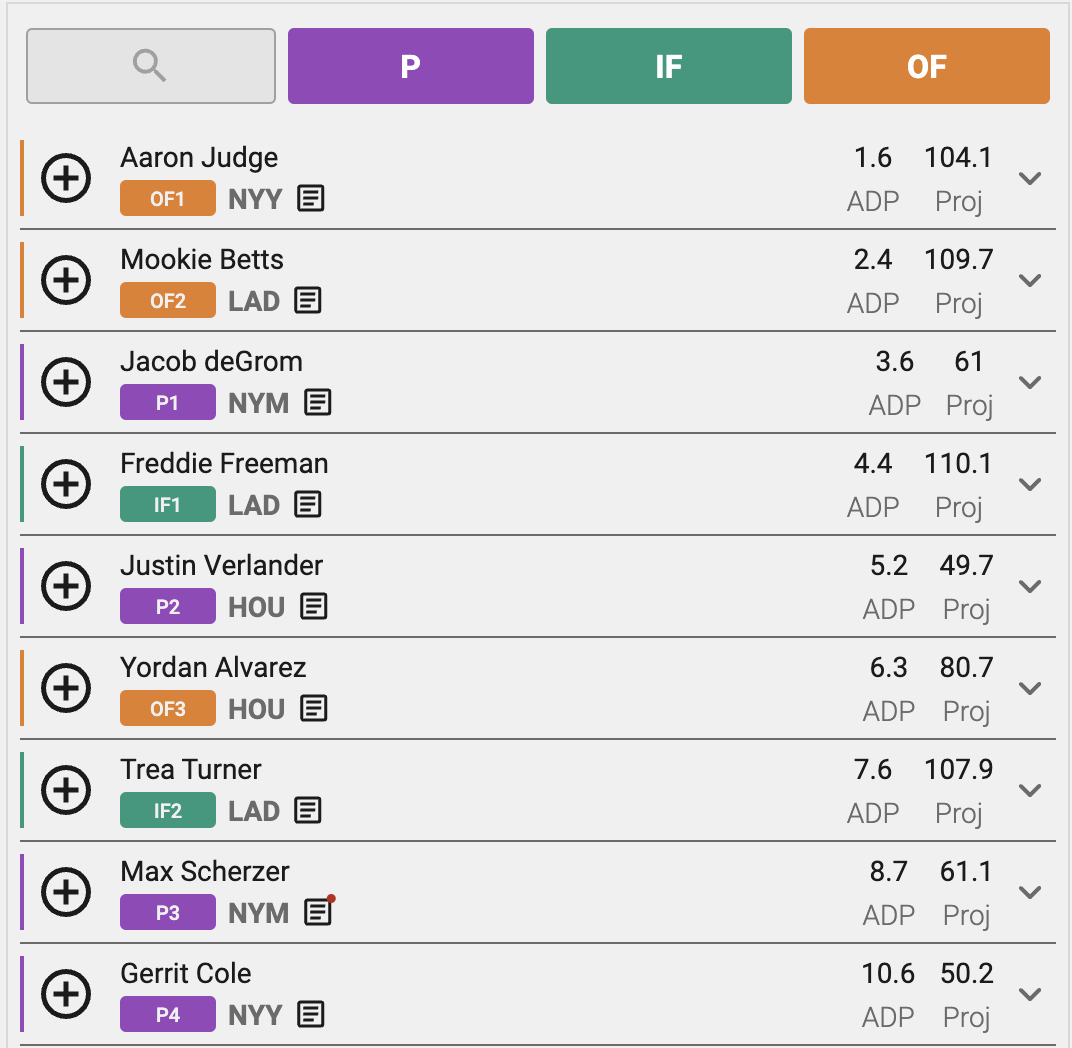
So yeah, it should be obvious that Aaron Judge, Mookie Betts, and Jacob deGrom are going to be desirable in a draft setting like this. This isn't to tell you to not target them, though. I mention this because it's going to be difficult (impossible?) to fill a team with all the best players from the Dodgers, Astros, Yankees, or Mets. Additionally, let's say you reach Round 3 with 2 of those stacks, just understand that other managers will have good/great players from those squads.
All that being said, if your draft falls a certain way, then it makes the most sense to load up on any of these 4 teams to start. There's a reason these players are going early and it's because they play for teams most likely to get to the World Series
But wait! These teams have a bye in the Wild Card Series. Is it even possible to advance past Round 1 (which includes the Wild Card Series and Divisional Round, remember) with a Yankees-Dodgers stack? The answer is "it depends." The Wild Card Series is a best-of-3. The Divisional Round is a best-of-5.
If all 3 games are played in the Wild Card Series, and only 3 games are played in the Divisional Round, then it could be cutting it close. If every Wild Card series were to be a 2-game sweep followed by every Divisional Round being a 5-game showdown, then not much is lost by fading Wild Card teams. My 2 cents? If you're going to do a 3-team stack, include at least 1 Wild Card team. Mets-Astros-Guardians might be my favorite.
Let's also touch on uniqueness here. We all know the MLB playoffs are a bit of a crapshoot. Even though the best teams get a bye in the new format, we're talking about 3, 5, and 7 game series here. Nothing should surprise anyone with how this goes down.
Therefore, there's a case to be made for stacking 2 (or 3) "different" teams. Mariners-Padres? If that ends up being the championship matchup and you stacked it, I'd say you're looking pretty, pretty good. Guardians-Cardinals? Same thing. Of course, the odds of this happening are low.
But what do you win when you win?
It's the mindset you should have in any large-pool tournament. If you draft for a Yankees-Mets World Series, and you're right, then you can win it all. You'll just still be competing in a large-pool tournament. If you draft for a Blue Jays-Phillies World Series, however, and you're right, then you might just win the whole damn thing without much of a fight.
Positions
The next question to ask is "how many of each position should I draft?"
Just 7 of the 12 players taken can score for you in each round. This includes 3 pitchers, 1 infielder, 1 outfielder, and 2 "FLEX" players (that must be hitters).
In "normal" MLB Best Ball, premium bats are generally seen as the better early-round investment since there's such a large pool of starting pitchers. During the regular season it's feasible to go "zero SP" by fading pitchers early on, and then taking a lot of them later in the draft. I think that this year's advance rate data showed that. By doing so, you can luck into 2-start weeks and high-end performances. Hitter production can be more stable year-to-year. In regular season Best Ball, pitchers only make up 3-of-10 starting spots.
But in the playoffs? The pool of usable SPs shrinks drastically. Not only are there fewer teams to work with, but recent postseasons have shown that managers give their starters shorter leashes come October. Could this make the high-end aces more valuable?
Additionally, it's possible for a playoff series to be just 4 games, and that's in the final two rounds. Let's say the Mets sweep the World Series and deGrom is awesome in his lone start. It's going to be tough for a hitter to match that production with such few games to work with. And if a dominant starter gets two starts? It could be game over.
Here are some remaining questions I have about roster construction:
If you draft an elite hitter (either IF or OF), do you even need to take a 2nd at the position? Let's say you have a Mariners stack and take Julio Rodriguez. Odds are, if the M's are good this postseason, Julio will be a big reason why. You only need to start one outfielder per round. The rest of your picks might be better spent elsewhere? Or perhaps you still want a backup option. My point is don't feel you absolutely need to have balanced roster construction. It's going to take a unique combination to win this thing!
Don't be afraid to draft an elite closer. I think. @b3isbol has Underdog scoring data from last year's playoffs. The No. 2 most valuable pitcher? Reliever Tyler Matzek. 12 of the top 25 pitchers were relievers. It makes sense if you buy that managers won't let starters pitch deep into games. There are no points for saves, but relievers can still get wins. Good relievers also rack up strikeouts and don't give up many runs. I'm not positive we'll see something as drastic as 12-of-25 this year, but Edwin Diaz in a Mets stack could be a great value (and unique!)
Summary
Hopefully this helps get you started on some drafts for "The Pennant!" It's a format that is best suited for multiple entries so that you can experiment with different team stacks and roster constructions (again, the goal is to have several bites at the apple for the top prize).
As you can tell, there's a lot more that goes into it than just picking players from the best teams, at least if you want to maximize your odds.
I'll have at least 1 more article with some more "micro" thoughts on the tournament (spoiler: Cleveland is underrated) and I'll be sharing takes on Twitter as well. If you'd like to discuss more before then, reach out @toomuchtuma.
And if all else fails, just remember to pick the players who will score the most points. It's a bulletproof fantasy strategy that has never led anyone astray.